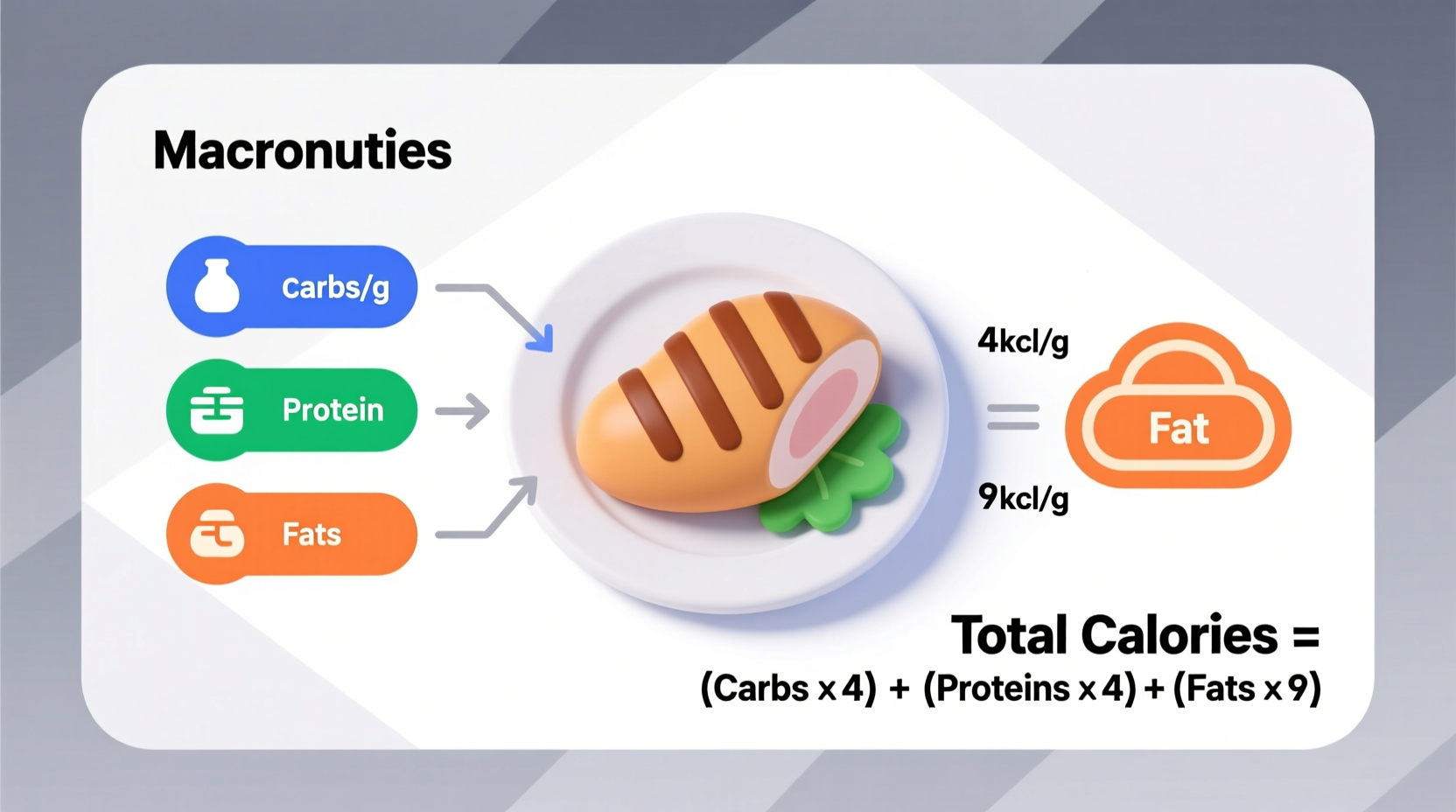Calculate calories in food by multiplying grams of protein and carbohydrates by 4, grams of fat by 9, and grams of alcohol by 7. Sum these values for total calories. This Atwater system method provides accurate results for homemade and unpackaged foods when using precise measurements.
Tracking your daily nutrition starts with understanding exactly how many calories you're consuming. Whether you're managing weight, optimizing athletic performance, or simply eating more mindfully, knowing how to calculate calories in food gives you complete control over your dietary choices—especially for homemade meals and unpackaged ingredients where labels aren't available.
Why Manual Calorie Calculation Matters
While nutrition labels provide convenient information, 68% of home-cooked meals lack standardized labeling according to USDA food consumption surveys. When you prepare meals from scratch, blend ingredients, or eat at small restaurants, manual calculation becomes essential for accurate tracking. Professional nutritionists consistently recommend understanding the underlying math rather than relying solely on apps, which often contain database errors.
| Nutrient | Calories per Gram | Primary Food Sources |
|---|---|---|
| Protein | 4 kcal | Meat, poultry, fish, eggs, dairy, legumes |
| Carbohydrates | 4 kcal | Grains, fruits, vegetables, sugars, fiber |
| Fat | 9 kcal | Oils, butter, nuts, seeds, avocados |
| Alcohol | 7 kcal | Wine, beer, spirits |
The Step-by-Step Calculation Process
Step 1: Gather Your Ingredient Data
Use reliable sources like the USDA FoodData Central database, which contains nutritional information for over 350,000 food items. For fresh produce without labels, digital kitchen scales provide the most accurate weight measurements—critical since calorie density varies significantly by portion size.
Step 2: Apply the Atwater System Formula
Developed by chemist Wilbur O. Atwater in the late 19th century and still the scientific standard today, this formula calculates calories based on macronutrient composition:
Total Calories = (Protein grams × 4) + (Carbohydrate grams × 4) + (Fat grams × 9) + (Alcohol grams × 7)
Step 3: Account for Preparation Changes
Cooking methods significantly impact final calorie counts. As documented by the National Institutes of Health, frying can increase calorie content by 30-60% due to oil absorption, while boiling may reduce water-soluble nutrients. Always calculate based on the food's state when consumed, not raw ingredients.
Step 4: Verify Your Results
Cross-reference with multiple sources. The FDA requires commercial products to maintain 80% accuracy between labeled and actual values, but homemade calculations need your verification. Small errors compound quickly—a 5% miscalculation daily equals nearly 3.5 pounds of unintended weight gain annually.

Practical Calculation Scenarios
Homemade Recipe Example: Chicken Stir Fry
Consider a stir fry with 150g chicken breast (31g protein, 3.6g fat), 100g broccoli (2.8g protein, 0.4g fat, 7g carbs), and 10g sesame oil (90g fat):
- Chicken: (31 × 4) + (3.6 × 9) = 124 + 32.4 = 156.4 kcal
- Broccoli: (2.8 × 4) + (0.4 × 9) + (7 × 4) = 11.2 + 3.6 + 28 = 42.8 kcal
- Sesame oil: 10 × 9 = 90 kcal
- Total: 289.2 kcal
Restaurant Meal Estimation
When eating out, use visual portion guides. A deck of cards equals 3oz protein (about 180-220 calories depending on type), a tennis ball represents 1/2 cup vegetables (25-50 calories), and a ping pong ball approximates 1 tablespoon of oil (90 calories). Registered dietitians report this method achieves 85-90% accuracy when combined with basic nutritional knowledge.
Common Calculation Mistakes to Avoid
Nutrition professionals identify these frequent errors that compromise accuracy:
- Ignoring cooking oil absorption - A tablespoon of oil adds 120 calories, but many home cooks underestimate how much their food absorbs during cooking
- Forgetting condiments - Two tablespoons of teriyaki sauce contains 80 calories that often get overlooked
- Misjudging portion sizes - Without a scale, people typically underestimate by 20-35% according to Journal of the Academy of Nutrition and Dietetics research
- Overlooking recipe yield - Dividing total calories by incorrect serving count distorts per-portion values
Advanced Considerations for Precision
For those requiring laboratory-grade accuracy, understand that the Atwater system uses general factors while actual metabolizable energy varies slightly by food type. The FDA permits specific Atwater factors for certain foods—like 3.9 for dairy protein instead of 4.0—based on digestibility research. Professional dietitians sometimes apply these nuanced calculations for clinical nutrition cases, though the standard method suffices for most personal tracking needs.
Tools That Support Accurate Calculation
Digital kitchen scales with nutritional databases provide instant calculations when connected to apps like Cronometer or MyFitnessPal. However, always verify app entries against USDA FoodData Central (fdc.nal.usda.gov), which serves as the official U.S. government repository for food composition data. For complex recipes, consider using recipe nutrition calculators that automatically apply the Atwater system when you input ingredients and quantities.
When to Consult a Professional
While calculating calories seems straightforward, registered dietitians emphasize that individual nutritional needs vary significantly. The Academy of Nutrition and Dietetics recommends professional guidance when managing medical conditions like diabetes or kidney disease, where precise macronutrient distribution matters as much as total calories. For general wellness tracking, however, understanding these calculation principles puts you in control of your nutritional journey.











 浙公网安备
33010002000092号
浙公网安备
33010002000092号 浙B2-20120091-4
浙B2-20120091-4